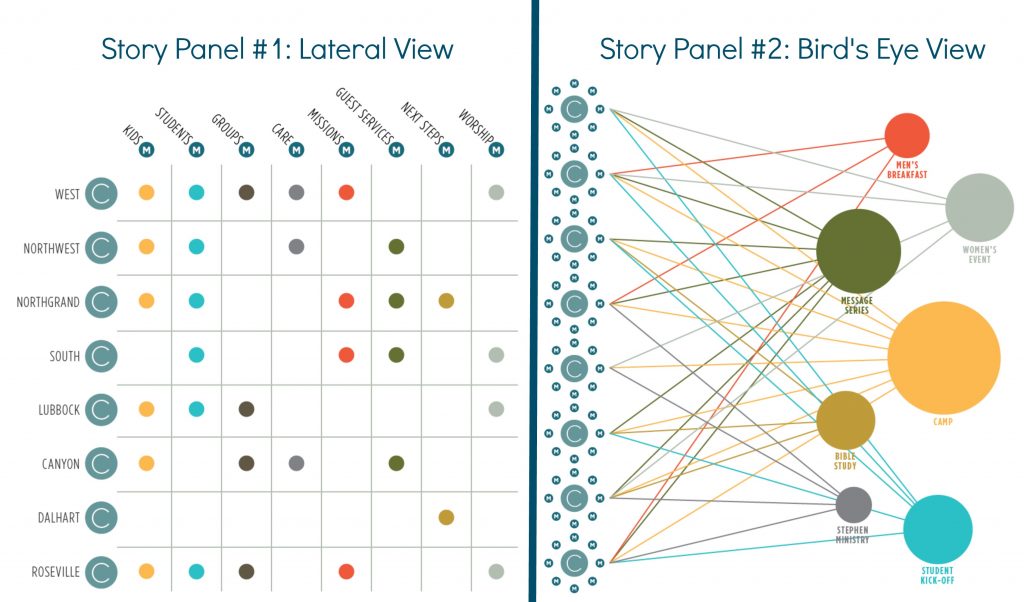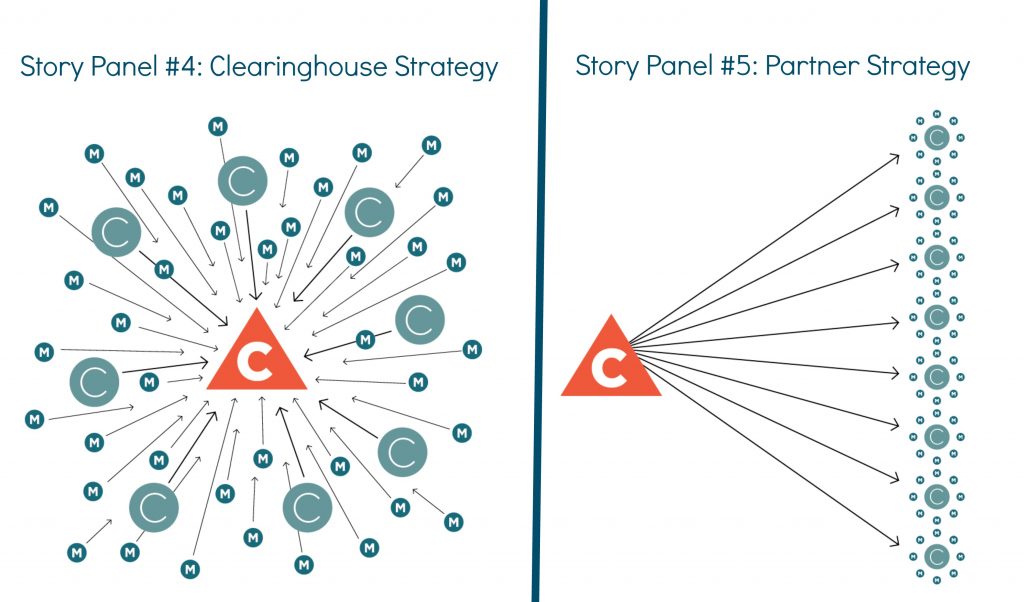One Multisite Church’s Story of Simplifying Communications
Guest Post by Judy Stallwitz
Our staff loves each other. We’re a healthy team that balances humility and willfulness.
 But just like maintaining a healthy diet or a healthy marriage, maintaining good team health requires attention to drift.
But just like maintaining a healthy diet or a healthy marriage, maintaining good team health requires attention to drift.
“Drift” isn’t a mystical cloud that materializes. It can easily tiptoe into a staff when we’re distracted from our goals and values by anything… even good things. One indicator of an organization’s health is how the staff handles communications. What do we expect and what do we deliver? Day-to-day stresses reveal our actual values.
Recognize Drift When You Monitor Your Communications
Several years ago, our staff at Hillside Christian Church experienced some drift. Multisite growth is both exciting and challenging – and our church was growing like crazy. Yet we were responding to important growth needs at the expense of certain operational needs.
When I say we, I begin with me.
The Communications Team was feeling the heat. We were inundated by requests that were often last-minute or lacking coherence.
We were communicating how difficult the situation was becoming, yet the stress began creeping into staff interactions. My flawed assumption was that everyone from all campuses and ministries should see the issues and adjust. How could they miss it? I wondered.
Finally, I was able to shift my viewpoint and ask a better question: how can we work together as a healthy team and avoid this difficult situation?
A Healthy Team Tells the Story Together
As communicators, we lean on the power of story to communicate urgency to our constituency. Even so, we can neglect to utilize the power of story in our work context.
Why not tell the story as a team? Our story was about a vending machine.
We took that approach and combed through all the data that showed the scope of work: the annual number of requests, the average lead-time, and the project load according to campus and ministry areas. Since we had begun to refer to our current communications request process as the unending vending machine, why not use that image as our story metaphor? And just like that, our little communications “Dorito” icon (The Dorito C) was born.
Here’s a sampling of some of our story panels.
 The first image illustrates how ministry teams can see straight down their own calendar line, unaware of other lateral events of other ministries (Story Panel 1). Meanwhile, the communications team experiences the tension of the organization’s scope because they have a bird’s eye view in their daily environment (Story Panel 2).
The first image illustrates how ministry teams can see straight down their own calendar line, unaware of other lateral events of other ministries (Story Panel 1). Meanwhile, the communications team experiences the tension of the organization’s scope because they have a bird’s eye view in their daily environment (Story Panel 2).
 How can a communications team help all the ministry stakeholders develop this kind of understanding? Communications – the Dorito C’s – assume all stakeholders are aware of the scope of ministry. Yet the requests continue to pour in. Overwhelmed and resigned, The Dorito C team continued to respond to every request possible using its vending machine strategy (Story Panel 3).
How can a communications team help all the ministry stakeholders develop this kind of understanding? Communications – the Dorito C’s – assume all stakeholders are aware of the scope of ministry. Yet the requests continue to pour in. Overwhelmed and resigned, The Dorito C team continued to respond to every request possible using its vending machine strategy (Story Panel 3).
Unbridled input from every angle feels as bad as it looks. Without a purposeful communications strategy, the team is positioned in the center of a circle, like a clearinghouse, with everyone firing requests toward the center. Teams begin to exercise the reflex to grab what they can get. Resentment can build from unintentional, unrealistic, or unmet expectations (Story Panel 4).
One simple shift changes the process. The communications team moved its position from receiving data in the middle and instead, partnered with each unit in the planning process (Story Panel 5). This creates an environment where ministry teams and the communications teams align their expectations and build margin into the process.
A Healthy Team Makes It Work Tangibly
The approach brings scope clarity to all stakeholders.
It takes time. It takes intentionality to gather teams beforehand to plan their ministry season. It takes compromise at the table. It takes grace. But this cooperative approach creates a space where our best – everyone’s strengths – are featured as people work together.
To set the shift into motion, first we met with teams and told the story of our current landscape. Then we painted a picture of how advanced planning on a multisite scale could operate, emphasizing that it would take energy on everyone’s part. But we offered more than simple good will to sweeten the deal: our communications team (The Dorito C’s) would synthesize all the information for the ministry calendar and deliver a comprehensive plan including the delivery schedule of all products for everyone.
Think of this as writing a budget for your family instead of living paycheck to paycheck… with teenagers… who have debit cards.
A Healthy Team Makes the Time to Plan Together
We’re blessed to work with discerning leadership. Our directional team had already begun identifying the source of the problem and considering planning solutions. They partnered with our efforts for real results. They enhanced and championed the plan and provided the kind of support every team dreams for during a big change. They asked us to present “The Vending Machine” to all campus and ministry team leaders in one big, fun get-together.
Every person who attended that meeting lit up with possibility and threw in valuable suggestions. The team was in! This energized coalition of leaders took the vision to their ministries and campuses and we’ve operated successfully this way for over two years.
When I talk with multisite teams who haven’t implemented a framework for advanced planning, the common answer is, “We’re thinking about it.” That’s usually code for, “When we find the time.”
Make the time. Your situation is unique and your approach to planning may vary, but it doesn’t change the truth:
Healthy teams plan together.
*This post first appeared on The Unstuck Group’s blog.
More about Team Building
Teams: 4 Questions to Ask about Your Church Communications
Teams: Why Guess About Each Other When You Can Know Each Other?
Team Exercise: Do Differences Divide Your Team or Unite Your Team?

